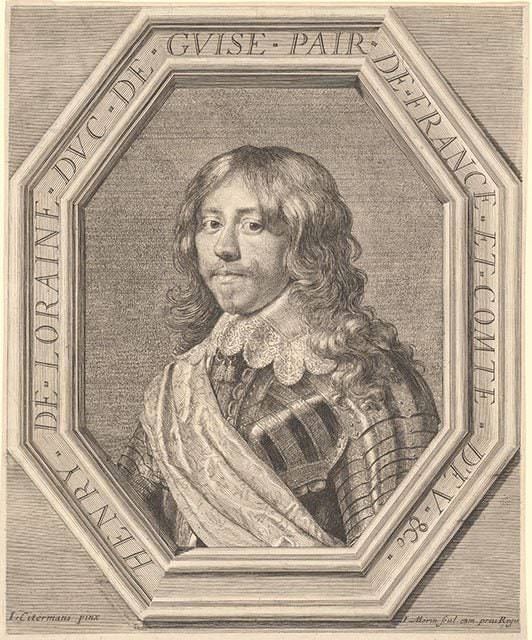Jean Morin
Jean Morin
French c. 1595–1650
Justus Sustermans (after)
Flemish 1597–1681
Henri de Lorraine, Duc de Guise c. 1630
etching and engraving; state i/iii
Colin Holden Charitable Trust
Jean Morin’s works harness the naturalistic and gestural impression achieved by the etching technique. Characterised by freely executed lines and a hand-drawn appearance, the fluid visual effects brought forth by etchings often stand in opposition with the polished restraint typical of French print portraiture from the era.
In particular, Morin used etching in the modelling of faces and heads to accentuate the personality and humanity of his sitters. This approach is illustrated by the multitude of intersecting etched lines of the Duke’s wispy, imperfectly coiffed mane, which enhance this uncharacteristically unidealised portrayal of a high-ranking nobleman.



